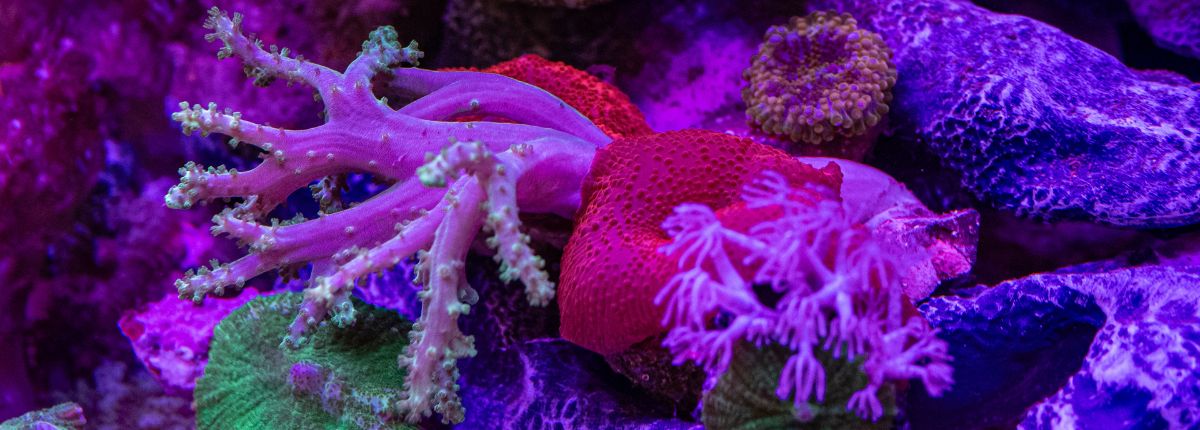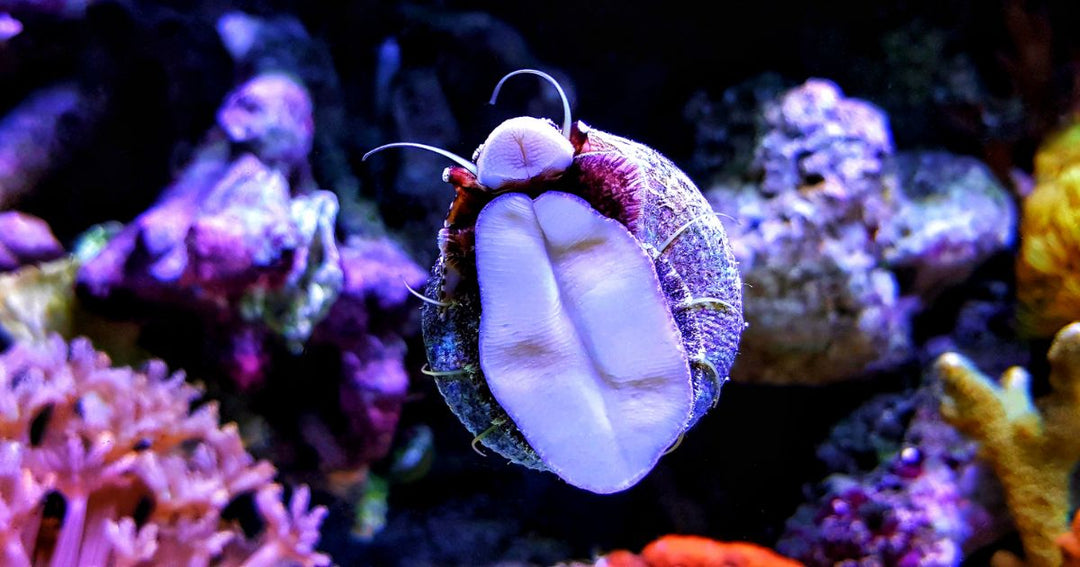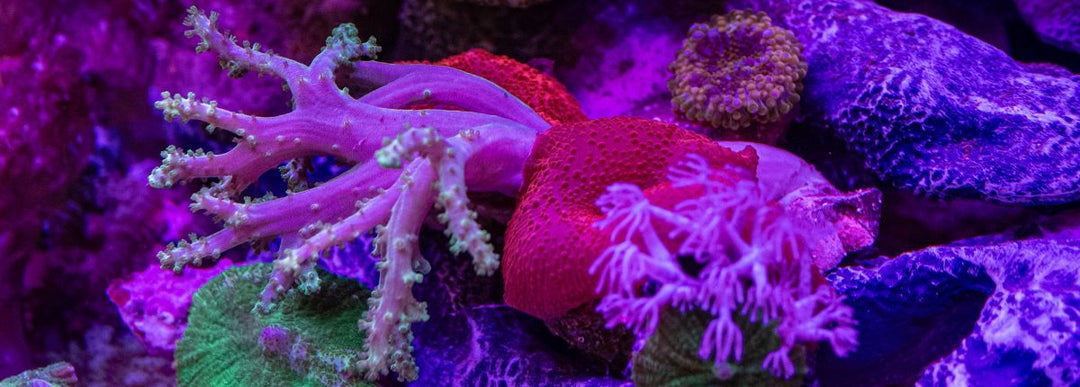Are My Corals Healthy? Understanding Natural Coral Changes

Corals are the heart of the reef and one of the most captivating parts of your Living Ecosystem Aquarium. With their shifting colours, pulsing textures, and gentle movement, they bring your system to life.
At Living Oceans, we’ve sustainably sourced some of the most resilient, fast-growing, and beautiful coral species—selected specifically for their suitability in small aquariums. These corals are highly responsive and will display natural changes in shape, colour, and posture over both short and long timeframes.
Beyond their beauty, soft corals also play a vital ecological role in your aquarium—providing habitat and refuge for fish, feeding on waste particles and bacteria, and uptaking nutrients as biomass as they grow. This helps recycle nutrients and naturally filter and clean the water, supporting the overall health of the Living Ecosystem.
In this article, we’ll walk through what healthy coral behaviour looks like, what signs to keep an eye on, and when it’s time to take action.
Why Do Corals Change Shape or Retract?
Soft corals are incredibly responsive to their environment. They change shape and posture in real time depending on lighting, water flow, temperature, nutrient levels, physical contact, sedimentation, and exposure to other corals. They can also retract and expel mucous, and even change colour—naturally or as a result of stress.
Retraction is when a coral does not expand to its full size and its polyps do not extend. This is a natural behaviour and, in some corals, retraction can last for several days to weeks. For example, leather corals often retract for extended periods and shed a mucous coating before responding and expanding to full size with polyps extended—often appearing better than ever.
Here are the most common natural behaviours you’ll notice:
Soft corals commonly retract in response to physical contact, changes in tank conditions, or increased sedimentation—especially following maintenance or aquascaping. Brief retraction is also normal after a fish brushes past or when there’s a sudden shift in water movement. This temporary withdrawal helps protect delicate tissue and clear away particles as the coral adjusts.
You may also notice corals puffing up, contracting, or subtly shifting in response to changes in lighting, flow, or feeding. These are natural adaptation behaviours and rarely a cause for concern.
Leather corals, in particular, often stay closed for extended periods as they shed a thin waxy layer to remove trapped debris and sediment. This process can last several days—or even weeks—and typically ends with the coral reopening larger, cleaner, and more vibrant than before.

2. Day and Night Cycles
Corals follow a daily rhythm. It’s completely normal for them to retract slightly overnight or early in the morning. As lighting increases, they expand again—especially under the Living Oceans lighting system, which mimics natural reef cycles.

3. Spreading and Reproduction
Soft corals such as mushroom corals and Xenia often reproduce by splitting (fission), dropping tissue fragments, releasing pedal lacerations, or spreading via stolons that form new polyps nearby. These fragments settle and grow into new colonies, contributing to the natural expansion of your reef.
Leather corals may grow new lobes or branches that start smooth and pale but develop structure and colour over time. They may also close briefly during or after a growth phase.
4. Competing for Space
Corals growing close together may compete for territory or light. You might notice one retract or lose colour at the contact point. With modular Living Blocks, it's easy to adjust the layout and create space between species.
In some cases, long-established corals may retract for 24–48 hours without showing signs of tissue loss or decay. This is especially common after a water change, introduction of new livestock, or a change in flow pattern. Observation over time is key—reacting too quickly can disrupt their natural adjustment.
How Lighting Affects Coral Appearance
Light plays a key role in both coral health and appearance.
1. Colour Changes and Fluorescence
Some corals appear more vivid under specific lighting conditions. For example, green morphs glow brightly during the moonlight phase. These colour shifts are normal and expected.

2. Overexposure or Low Light
If a coral looks consistently pale or translucent, it may be receiving too much light. If it’s stretching or tilting away from the rock, it may be reaching for more. The Living Oceans lighting system is carefully calibrated to avoid these issues, so it’s best to contact us before making any manual changes.
Branching corals occasionally close completely to shed a thin film. This cleaning phase is healthy and is usually followed by noticeable growth.
When to Monitor vs. When to Act
Most coral changes are normal and temporary. But it’s important to recognise when something might require intervention.
1. Normal Coral Behaviour:
- Retraction at night or after a disturbance
- Temporary closing or shedding in leathers
- Daily colour shifts based on lighting
- New buds or growths forming nearby
2. Signs That Need Attention:
- Tissue becoming jelly-like or peeling off
- Clear evidence of decay (not just retraction)
- If retracted for longer than several weeks
- Many corals showing stress at once without an identifiable cause
If a coral detaches from its base or plug, reposition it in a safe, sheltered place on the Living Blocks reef—such as in a Cup Block bowl or gently in the sand.
Potential Causes of Coral Stress
If your coral continues to look unhealthy, here are some common stressors to consider:
- Poor water quality – High nutrients, low oxygen, or pH swings can impact coral health. Contact Living Oceans support for a water quality test.
- Sudden lighting changes – Too much intensity too quickly can lead to bleaching. Move the coral to a deeper or shaded area of the Living Blocks reef or into the sand.
- Handling or damage – Physical contact or movement may trigger extended retraction. Observe calmly before acting.
- Temperature fluctuations – Maintain a stable range between 24–28°C. Check the thermometer regularly and contact Living Oceans if it's outside this range.
- Chemical warfare – Some corals release compounds that affect neighbours when space is tight. You can separate them—or let them sort it out, depending on your system and preferences.
Keeping a stable environment and avoiding unnecessary intervention helps reduce the chance of coral stress.
If you’d like a step-by-step guide to choosing the right corals for your aquarium, click this link to read our full article: Choosing the Right Fish and Corals for a Sustainable Ecosystem Marine Aquarium.
If You’re Concerned
If it seems like normal behaviour, the best action is often to observe and allow the natural recovery process to take place.
If you notice unusual changes and there hasn’t been a clear cause, take a photo or video to track its progress over time.
First, check out our Support Hub for quick answers, troubleshooting tips, and helpful guides.
Still unsure? Email us at support@livingoceans.com.au and include a photo or video. Your inquiry will be logged, and our team will be in touch to help.










